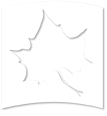How to Create a Simple Program Assessment Plan
- List your program’s learning outcomes (e.g., students will be able to analyze a problem and identify the computing requirements appropriate to its solution).
- For each outcome, identify:
- At least one direct measure via which students will demonstrate how well they achieved the outcome (e.g., group project management plan completed in ISU XXX; research paper on current best practices in IT completed in Indiana State University XXX; applied mathematics exam completed in ISU XXX; portfolio documenting mastery of program outcomes submitted in ISU XXX).
You may use the same measure to assess more than one outcome (for example, the group project management plan could be used to assess students’ oral communication skills, teamwork skills, and management skills). Doing so can make assessment more manageable in programs responsible for a large number of outcomes. - Performance expectations for the measure (e.g., 100% of students will earn a score of at least 3 (satisfactory) on the rubric used to assess the project; 90% of students will earn at least 80 of 100 possible points on the exam).
- The specific person(s) responsible for conducting the assessments and analyzing and sharing the results.
- When they are available, the actual results of the assessment [e.g., Altogether, 45 of 50 students (90%) earned a score of at least 3. Thus the group as a whole met the established benchmark].
- The timeline according to which each outcome must be assessed and the results collected, analyzed, shared, and discussed. ISU does not require programs to assess all outcomes every year—but your accreditor may.
- At least one direct measure via which students will demonstrate how well they achieved the outcome (e.g., group project management plan completed in ISU XXX; research paper on current best practices in IT completed in Indiana State University XXX; applied mathematics exam completed in ISU XXX; portfolio documenting mastery of program outcomes submitted in ISU XXX).
- For the program as a whole, identify one pertinent indirect measure. It might be a survey or focus group via which graduating students identify how well they believe they mastered the program’s outcomes, what the program’s strengths are, what it should do differently, etc. Other options are alumni satisfaction rates, job placement rates, the number of students presenting research at regional or national conferences, the number of graduates enrolled in graduate programs, etc.).
- Establish a regular (at least annual) faculty meeting at which you will share the data you collected, reflect on what it reveals about how well students are achieving the outcomes, and develop at least one specific plan to improve student learning. At least every two years, you also should review the program’s learning outcomes and assessment plan, and recommend any needed adjustments. If your program has an external advisory committee, share the highlights of these discussions with that group and seek their input as well. Be sure to take minutes at these meetings.
- Establish a checkpoint midway between annual meetings to check on the progress of the faculty responsible for conducting assessments, collecting and analyzing data, sharing results with their colleagues, and so on.
Note: ISU also requires all programs to have a learning outcomes library and a curriculum map, and to submit an annual Student Learning Summary Report that summarizes their assessment efforts. See the assessment website for more information.
Contact
Kelley Woods-Johnson, Ph.D. (she/her)
Director, Assessment & Program Effectiveness
Academic Affairs
Indiana State University
Rankin 243
(812) 237-7975
Kelley.Woods-Johnson@indstate.edu
Meet
I am happy to meet to discuss your assessment needs. Feel free to email, call, or set up a virtual or in-person appointment.
FCTE Office Hours Spring 2024
- Wednesdays, 8:30am-10:30am
Schedule is subject to change. Call or email ahead to verify if desired.

